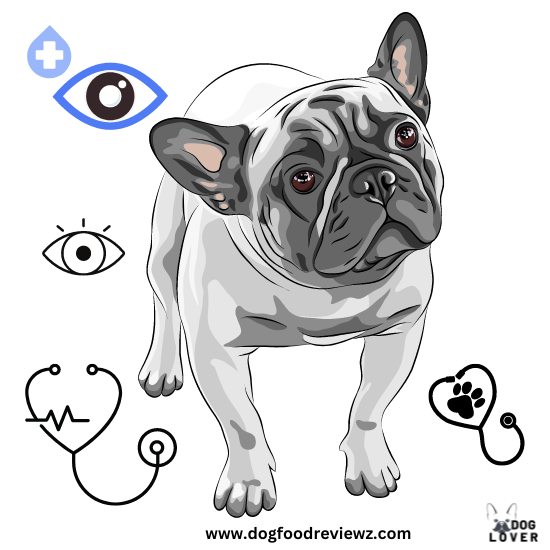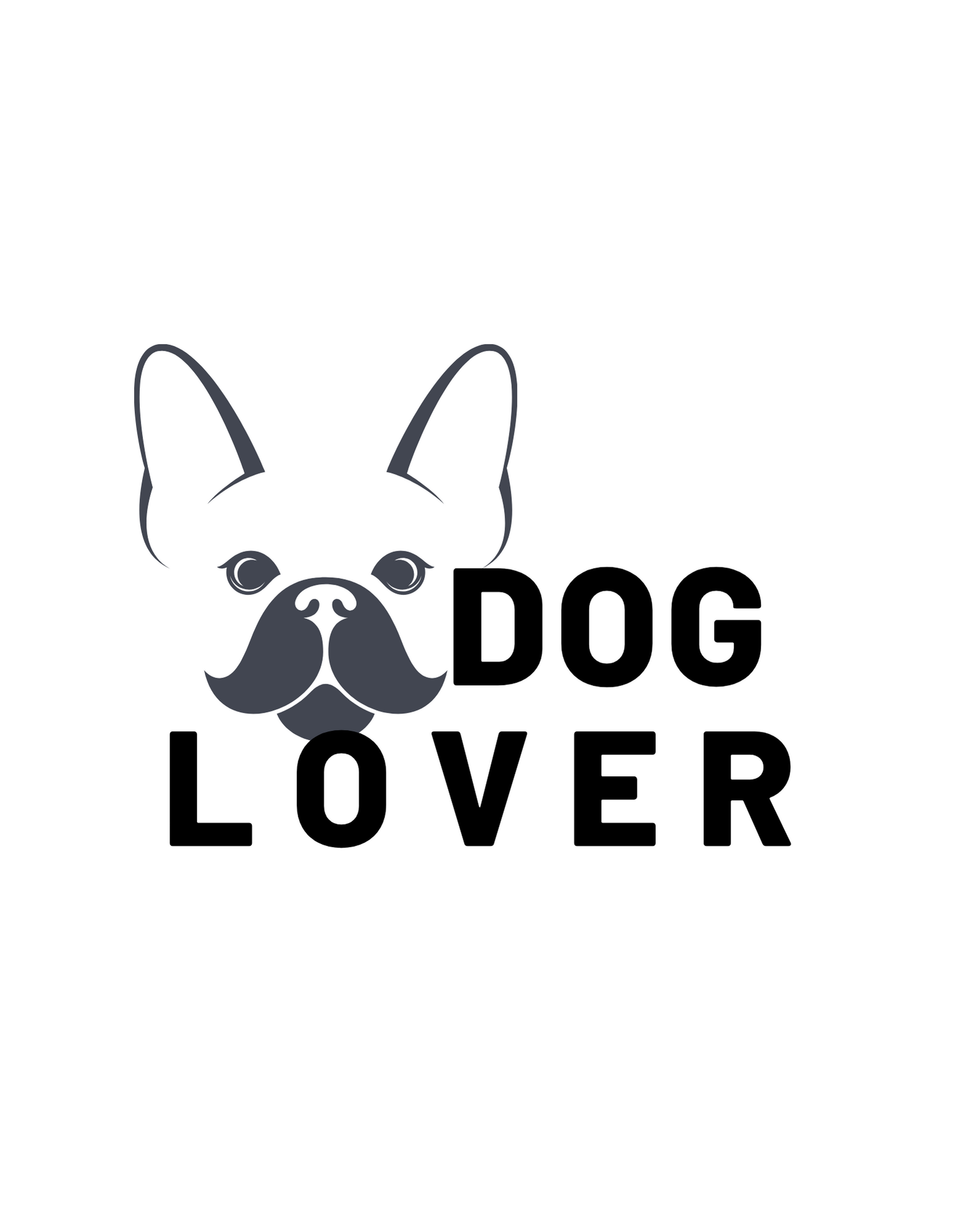All about dog eye health.
Walking with our dogs jumping up and down behind is thrilling. Besides our joy, we are also assured of our safety because they are watching after us. But eye issues can come in the way. Blindness, glaucoma, and cataracts are some of the problems that can stop you and your dog from enjoying that sweet evening walk and the scenery.
This is another justification for how crucial it is to continue having your dog get regular exams for health. This will allow the vet to conduct a complete examination from head to tail and ensure your dog has the best possible health and happiness. Read on for more information on caring for your fido’s eyes.

Understanding How Dogs Eyes Work
Fun Fact #1 Dogs see fewer colors
Only shades of blue and yellow are visible to dogs. Dogs only have a two-color vision or dichromatic vision. Grayscale is also visible to them. Dogs cannot see colors like red, orange, and green because they are outside their color spectrum.
Fun Fact #2 Dogs have 20/75 eyesight
Dogs’ vision is inferior to that of humans. Human vision is 20/20 on average. Most dogs have a visual accuracy of 20/75, meaning they need to be 20 feet away from an object to see it as clearly as a person can at 75 feet. The most popular breed of Labs employed as human seeing-eye dogs have a better vision nearer to 20/20.
Fun Fact #3 Blind dogs can still lead a fulfilling life
Blind canines can, nevertheless, do all dog-like tasks and lead remarkably regular lives. Humans cannot compare to the resilience of animals. Your blind dog will thrive and live happily in a safe environment.
Best Foods for Dog Eye Health
Diet is critical for canine vision wellness. Here are the best foods to boost your dog’s eye functions.
Pumpkin
This veggie is rich in eye-boosting antioxidants like beta-carotene, Lutein, and zeaxanthin. Besides supporting proper eye functions, these nutrients prevent other eye problems like night blindness and eye degeneration.
Pumpkin is also rich in phytosterols, zinc, and omega 3 to boost immunity and support skin wellness. There are several ways to feed pumpkins to dogs. Countless pet-related foods are made from pumpkin, ranging from snacks to pure canned pumpkin.
Pumpkin pie filling in cans should not be purchased because it contains sugars and other toxic dog ingredients. Don’t season the pumpkin seeds you give your dog with salt or oil.
Sweet potatoes
The vision-enhancing beta-carotene in large amounts in sweet potatoes makes them the best food for your dog’s eyes. The antioxidants in sweet potatoes prevent inflammation and oxidative damage to the eye cells. Beta-carotene is converted into vitamin A for improved immunity, cell growth, and skin health.
Ensure the sweet potatoes you give your dog are cooked, and the skin has been removed because the skin makes the food more difficult for your dog to digest. Never give a raw sweet potato to your dog. In addition to being challenging to chew, they may upset your dog’s stomach and perhaps result in a blocked intestine.
Carrots
Besides boosting dental wellness, these crunchy dog treats are important for your dog’s vision. They are rich in lutein and lycopene. These are powerful antioxidants that protect the eyes against UV rays and inflammation.
Carrots are the best food choices for pooches and healthy additions to meals, whether raw or cooked. Although carrot sticks or whole carrots are safe for pups, cutting them into small-sized slices beforehand is important. This is key, especially in small dogs, since they are susceptible to choking on large pieces.
Kale
This healthy vegetable is packed with zeaxanthin and lutein for vision wellness. Kale is also high in fiber for the digestive system. The vegetable, however, contains calcium oxalate and isothiocyanates which are harmful to your dog. This calls for moderation when giving it to your pup.
You can serve kale as a tasty treat or a topper. Larger dogs can consume more compared to their smaller counterparts.
Blueberries
Superfoods like blueberries have varied health benefits, from boosting immunity to preventing oxidative damage. Moreover, they are great choices for vision health. Blueberries contain the eye-friendly nutrients lutein and zeaxanthin. The berries also contain flavonoids like rutin which prevent macular degeneration.
Blueberries include anthocyanins, a particular class of phytonutrients that assist in night vision. Lastly, the crucial dose of zinc and selenium protects your pup’s vision. You can serve fresh, mashed, dried, frozen, or pureed blueberries.
Tomatoes
The eye-friendly phytonutrient and carotenoid lycopene in bright red fruits and vegetables are well-known to most people. Lycopene, abundant in tomatoes and can help prevent macular degeneration and sun-induced eye damage, is a powerful antioxidant.
Additionally, they have a wonderful healthy amount of lutein, a phytonutrient that protects the eyes. Consider freezing little cherry tomatoes and feeding them to your dog outside instead of giving him a real tomato, which can get messy. But keep in mind that cooking tomatoes increase the bioavailability of lycopene. So, tomato paste can also be frozen in ice cube trays.
Broccoli
This vegetable is practically brimming with beta-carotene and is a top source of lutein and zeaxanthin. Sulforaphane, a substance in broccoli and its sprouts, helps strengthen the immune system’s defenses against free radicals. Several small florets should be boiled for three to four minutes; then, your dog can enjoy them.
Fish
Cold-water fish are abundant in omega-3s, particularly EPA and DHA, which are crucial for cellular health. Examples of these species include salmon, tuna, cod, haddock, and sardines. Thirty percent of the fatty acids that make up the retina are DHA. Sardines’ very high omega-3 content further protects the retina’s health.
Spinach
Like the foods mentioned above, spinach is high in the antioxidants “lutein” and “zeaxanthin.” And you already know how effective they are for maintaining vision health. In addition, spinach, like broccoli, includes beta-carotene, which typically promotes the health of the dog eye and lowers the risk of macular degeneration.
Additionally, spinach contains vitamins A and C, which are strong antioxidants for vision wellness.
Serve spinach moderately. Oxalic acid, abundant in spinach, can stop your dog’s body from absorbing calcium. The calcium and oxalate mixture is flushed via the kidneys after the soluble oxalate combines with calcium.
Consuming in excess can cause a biochemical imbalance that can harm, afflict, or even kill the kidneys. Also, blood pressure problems and good bone growth may result from this.
Eggs
Lutein and zeaxanthin, found in egg yolk, protect dogs’ eyes from macular degeneration and reduce their risk of developing cataracts.
Additionally, eggs are a great source of glutathione, a natural antioxidant created by all living cells that combine the strength of sulfur and cysteine. It is present in the lens in large clusters and can help keep its transparency intact.
The powerful antioxidant is essential for halting and reducing cataract development. Additionally, it might be beneficial for glaucoma patients.
Selenium, another potent and extremely advantageous antioxidant for the eyes, is also present in eggs. It offers the added advantage of possibly increasing vitamin E’s efficacy. The best part is that it encourages glutathione production.
You should always boil eggs before feeding them to your dog. Eggs should be cooked or boiled without additional seasonings, such as salt or butter. Eggs cannot be your fido’s only protein source. Consider them more as treats rather than complete meals.
Best Supplements for Dog Eye Health
There are several eye-boosting supplements, but here are the main ones.
Beta-carotene/vitamin A
For good vision, enough vitamin A levels are essential. Consider giving your dog foods high in vitamin A and beta-carotene to keep his eyes keen enough to detect any movement. Foods like carrots, sweet potatoes, and pumpkin fall within this category. Beta-carotene is converted into vitamin A, promoting coat and skin functions.
Fish oil
Another healthy supplement for a variety of ailments, such as joint, heart, and even skin problems, is fish oil. It lowers inflammation. Fish oil benefits your dog’s eyes since it contains DHA, a fatty acid naturally found in the retina. Storing fish oil in a refrigerator retains its potency.
Lutein
Antioxidant lutein has been demonstrated to improve canine retinal response and visual performance. Spinach and other leafy greens contain it. If your dog is reluctant to devour a plate of raw or cooked spinach, go for dog foods that include spinach. Dogs with high needs for lutein can take lutein supplements. But be sure to consult the vet before introducing the supplements.
Bilberry
Bilberries, also called European blueberries, are loaded with nutrients and antioxidants to improve night vision. Additionally, it lessens eye strain and contributes to retinal atrophy.
Furthermore, bilberries strengthen cardiac wellness, fight cancer, soften blood vessels, and boost immunity. They also delay brain aging. The vet is rightly placed to determine whether your dog can tolerate bilberries.
Anthocyanins
The pigments called anthocyanins give some fruits and vegetables rich red and purple hues.
They are beneficial nutrients for promoting and maintaining healthy eyes and vision because they are potent antioxidants and anti-inflammatories. In particular, they can lessen eye tiredness and aid in the prevention and slow progression of macular degeneration.
Berries and sweet potatoes are examples of foods rich in anthocyanins that are suitable for canines.
Zeaxanthin and lutein
These two powerful carotenoids are frequently called “macular pigment” due to their central retinal location and capacity as potent antioxidants that increase macular pigment density. This pigment shields the macula’s cells by blocking free radicals and absorbing excess UV light.
Kale, spinach, broccoli, squash, eggs, and blueberries are foods rich in lutein and zeaxanthin that are suitable for dogs.
Glutathione
All live cells naturally produce the antioxidant glutathione. It contributes to lens transparency and is present in high concentrations in the lens. The bad news is that glutathione levels in the lens decline as canines age.
By ensuring adequate fluid outflow and purifying the aqueous humor of the inner eye, glutathione can aid glaucoma patients and prevent and slow the development of cataracts.
Eggs, bananas, apples, broccoli, and melons are rich in glutathione.
Lycopene
Some fruits’ red and pink hues come from a plant component called lycopene. It is an antioxidant that provides sun protection and lowers the incidence of cataracts, free radical damage, and macular degeneration.
Carrots, papaya, watermelon, and ripe tomatoes are lycopene-rich foods that suit your dog.
Zinc
Antioxidant zinc is crucial in protecting and preserving the retina’s health. It can generally support eyesight and stop the advancement of macular degeneration.
Dogs may be given beef, chicken, turkey, yogurt, and cheddar cheese, all rich in zinc.
5 Nutrients For Your Dog Eye Health
The table below summarizes the 5 key nutrients for your pup’s vision health.
| Nutrient | Food source |
| Vitamin C | Carrots, broccoli, watermelon, and tomatoes. |
| Vitamin E | Carrots and broccoli. |
| Zinc | Beef, chicken, and turkey. |
| Lutein and Zeaxanthin | Spinach, broccoli, carrots, and eggs. |
| Omega-3 fatty acids | Fatty fish. |
Assessing Your Dog Eye Health
You can learn a lot about your dog’s health through its eyes. The ASPCA provides nine health recommendations to assist you in identifying both healthy eyes and warning signals.
- Look directly into your dog’s eyes in a well-lit environment. The white area around the eye ought to be white, and they should be bright and clear. Healthy eyes should not tear, discharge, or have crust in the corners. The pupils should be identical in size. Take your fido to the vet if you see cloudiness, uneven pupil size, a visible third eyelid, or yellowish whites.
- Roll down your dog’s lower eyelid with your thumb to reveal the lining. It should be pink.
- To prevent hairs from scratching or poking your dog’s eyes, groom the region around them. Use round-tipped scissors with great caution.
- Your dog may have some dirt in her eyes if you see discharge or runny eyes. Wipe a damp cotton ball gently from the corner of the eye outward. Avoid touching its eye or rubbing the cornea. If the issue persists, visit the vet.
- Keep your dog’s eyes safe if you use any sprays or flea-control solutions. Avoid using grooming items that can irritate your dog’s eyes.
- Watch how your dog acts. Keep an eye out for any frequent rubbing or squinting. These could be signs of a serious eye problem.
- When driving, resist the urge to let your dog hang its head out the window. The risk of infection or harm if debris or an insect touches your dog’s eye is not worth it. The wind might also dry up your dog’s eyes.
- Research its breed to ensure that your dog’s eyes remain in the best possible condition throughout its life.
- Take your dog regularly to the vet for eye check-ups.
Changes Brought on By Age
Many dogs get lens clouding beyond the age of six. Your dog will adjust to these changes as this process gradually unfolds.
With aging, their night vision will become less sharp. Extra illumination can help your pooch feel more at peace, making it more willing to venture outside at night.
Certain dogs may become more sensitive to light as they age, but they will adjust as the change takes hold.
5 Ways To Keep Your Dog’s Eyes Healthy
Below are the key tips for keeping your dog’s eyes healthy and enjoying the beautiful scenery together.
Dog goggles
Sunglasses are open. However, dog goggles are closed-fit to your pet’s face. Goggles are a fantastic way to shield your furry friend’s eyes from dirt, grit, and other environmental factors.
Frequent exercise
Ensure your dog exercises frequently; eyes need healthy circulation since they require oxygen.
Keep their eyes clean.
Keep your pet’s eyes clean at all times to protect their eyes. Our dogs’ eyes can flush out dirt just like ours can, but the hair surrounding their eyes can trap this dirt and debris. So prepare yourself with cotton buds and an eye cleanser. If you can, clean your dog’s eyes once a week.
Sufficient sleep
Ensure your pup gets enough sound sleep. Lack of sleep can cause glutathione levels to drop.
Proper hydration
Dehydration may lead to the failure to produce tears, thus causing dry eyes. As a result of dehydration, the body redistributes fluid to keep more vital organs blood-supplied. The eyes are one area where fluid is frequently removed. Your dog may be severely dehydrated if its eyes appear to be sitting further back in its skull.
Always keep fresh and clean water available.
What to do to improve dog eye health?
Understand your dog’s breed.
Some breeds are more prone to eye disorders than others. For instance, entropion, a disorder where the eyelids fold inward and uncomfortably rub on the cornea, is more common in mastiffs and bulldogs. Research any illnesses or ailments your dog may be predisposed to so you know what to look out for.
Serve eye-friendly foods
Give your dog vision-enhancing foods. Such include carrots, blueberries, pumpkin, kale, sweet potatoes, broccoli, fish, and spinach. These foods contain healthy nutrients like lutein, lycopene, vitamins C and E, omega-3s, and zeaxanthin. The nutrients work together to give your dog strong and healthy eyes.
Keep your dog’s head inside the car.
Driving when your dog’s head is hanging on the window is dangerous and exposes your dog’s eyes to the wind and dust. This leads to ocular dryness and other eye issues.
Dog Eye Health: Final Thoughts
The health of your dog as a whole is significantly influenced by its eyes. They enable your dog to take in lovely surroundings. But only some colors can be seen by dogs. Glaucoma and cataracts in the eyes may affect your dog’s vision.
Herein lies the significance of a healthy diet. Healthy eye nutrients like lycopene and lutein are in eye-friendly foods like carrots and pumpkins. Serving these foods to dogs reduces their risk and severity of eyesight issues.
The vision of your dog is affected by age as well. Since older dogs are more prone to eye issues, it’s important to start introducing these foods at a young age. Always consult the vet before giving your dog any new foods.


